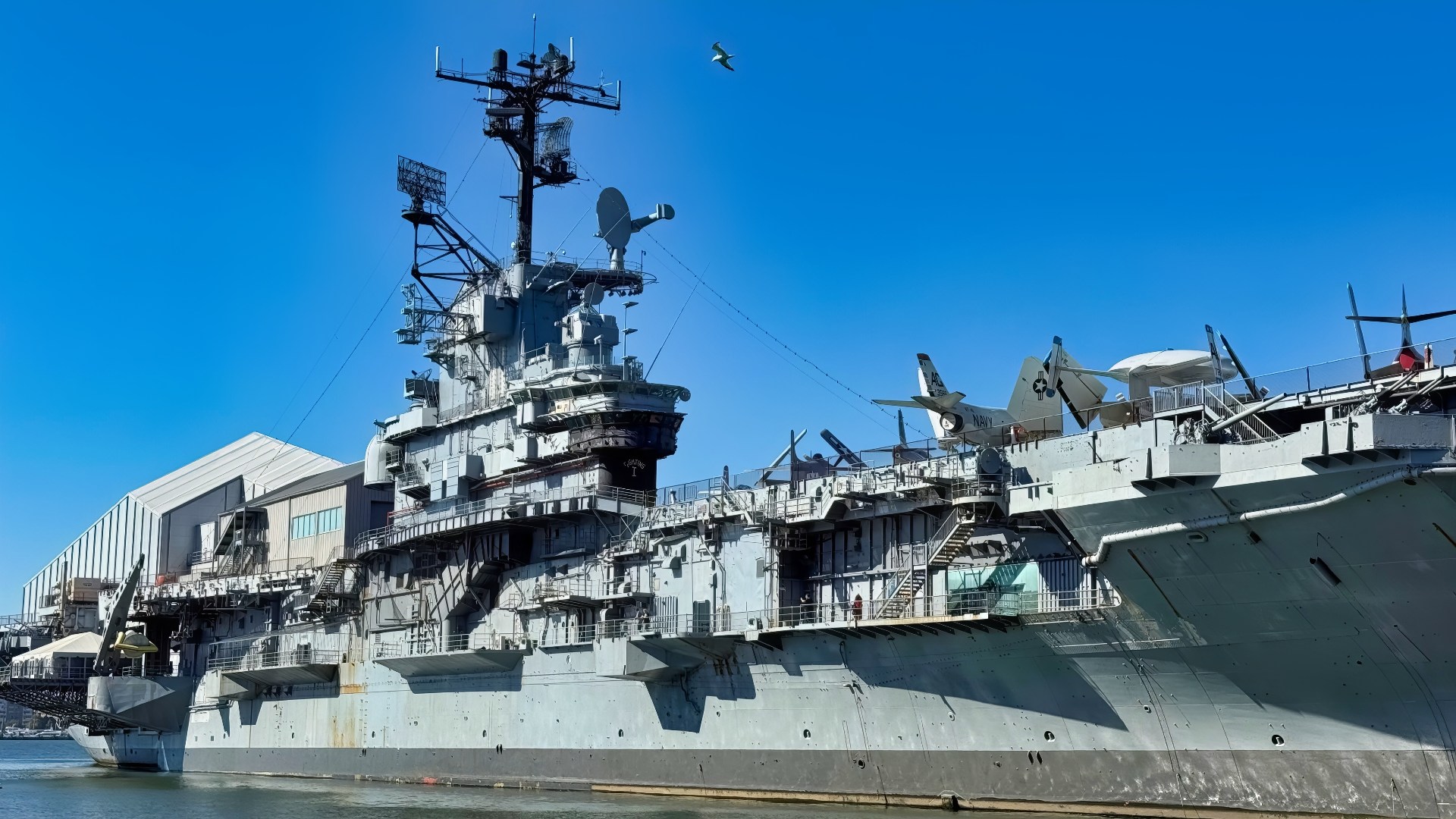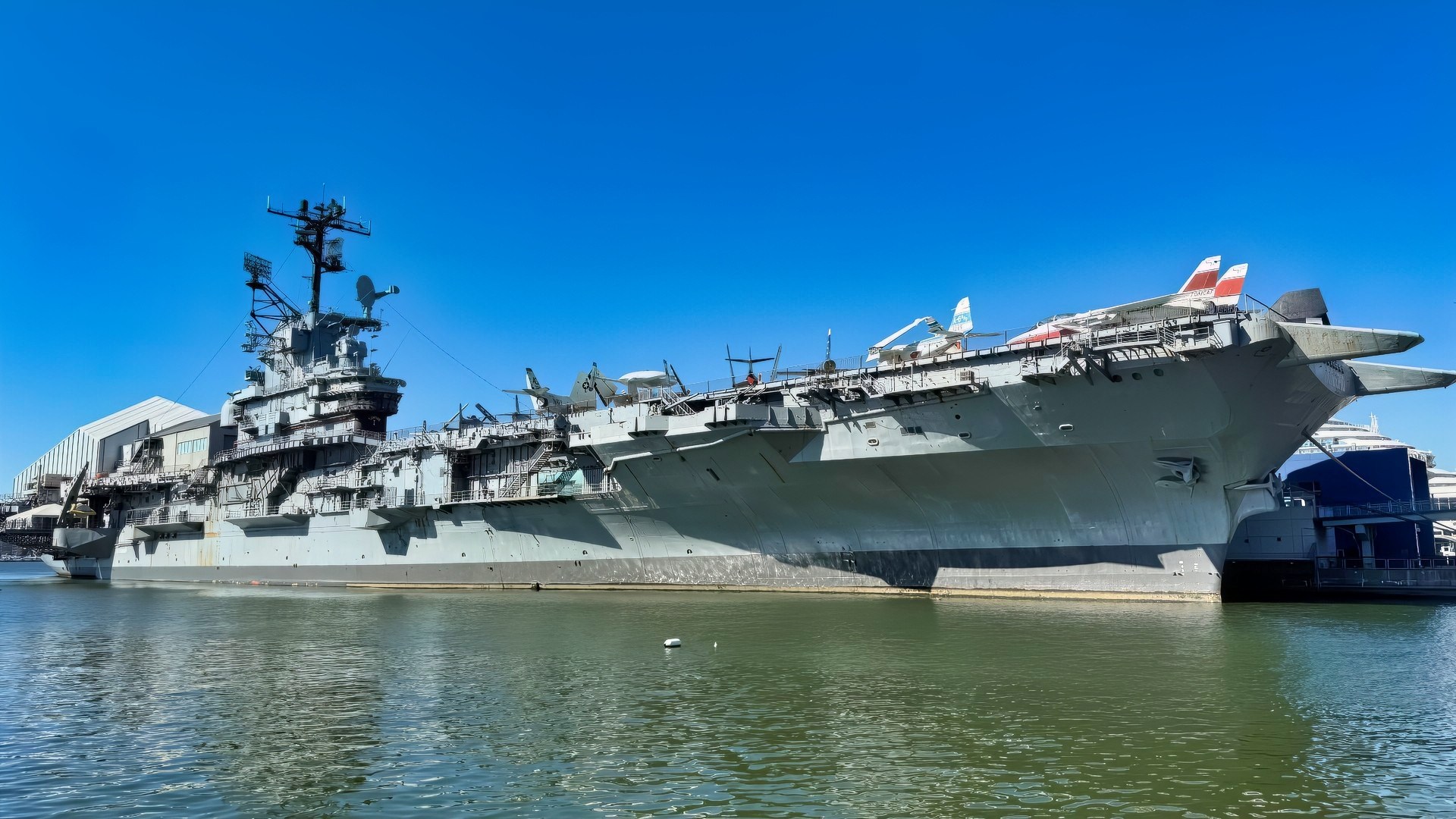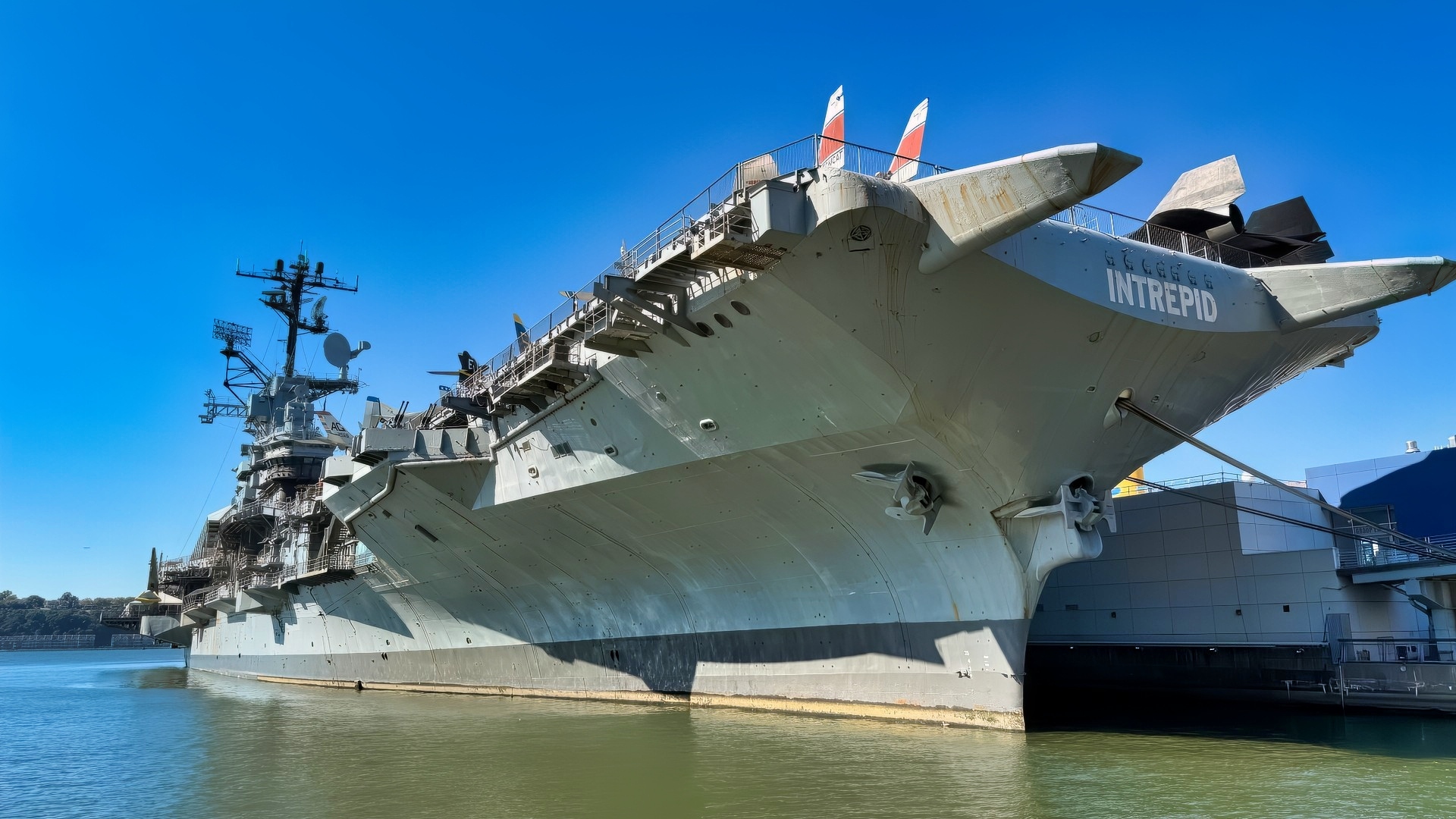Key Points and Summary – The USS Oriskany (CV-34) was a highly decorated Essex-class aircraft carrier that served with distinction in the Korean and Vietnam Wars, and from which John McCain was shot down.
-After its retirement and a failed scrapping attempt, the Navy chose a unique fate for the historic warship.

Essex USS Intrepid Carrier. Image Credit: National Security Journal.

Essex-Class USS Intrepid Aircraft Carrier. Image Credit: National Security Journal.
-Following a $20 million environmental cleanup, the Oriskany was intentionally sunk off the coast of Pensacola, Florida, in 2006.
-It now rests upright on the seafloor as the world’s largest artificial reef, known as the “Great Carrier Reef,” a premier destination for advanced scuba divers.
-We have included some shots of various Essex-class carriers for the reader’s reference. The National Security Journal took all the in-text photos.
USS Oriskany: How This Aircraft Carrier Became a Pristine Underwater Diving Destination
The USS Oriskany (CV-34) is popularly known as the aircraft carrier eventual U.S. Senator and presidential candidate John McCain operated from during the Vietnam War. McCain piloted an A-4E Skyhawk from the Mighty O.
He was shot down in 1967 and was famously taken prisoner and tortured for five and a half years.
The Oriskany had some hard luck of its own. My father-in-law was assigned to the carrier.
During his service, he witnessed racial tensions and a conflict between black and white sailors.
There were also some fatal accidents on board. The Oriskany was finally scuttled to create an artificial reef.
The Carrier Was Highly Decorated for Combat Prowess
The Oriskany was built during World War Two but produced too late to participate. This Essex-class carrier served well in the Korean War and Vietnam War. She earned 12 battle stars plus three Navy Unit Commendations and another three Meritorious Unit Commendations.

USS Intrepid Essex-Class Aircraft Carrier. Image Credit: National Security Journal.

USS Intrepid Essex-Class National Security Journal Original Image. Taken by Jack Buckby on 9/18/2025.
It was during the Vietnam conflict when the USS Oriskany really shined. My father-in-law served on the flight deck and pulled 48-hour shifts helping arrest aircraft topside. In seven months, the Oriskany conducted more than 12,000 sorties and dropped 10,000 pounds of munitions at North Vietnamese Army and Viet Cong positions, according to WarHistoryOnline.com.
The Ship Endured Some Deadly Mishaps
As mentioned, misfortune also marked the carrier’s service. In 1953, a bomb shook loose from an F4U Corsair and exploded, killing three sailors and wounding 13. In 1966, someone placed a lit flare in a storage box that started an immense fire. Forty-four personnel died in the blaze.
In 1976, the Oriskany was finally retired. While on reserve status, the carrier was not chosen to re-enter active service during the 1980s. In 1995, it was sold for scrap. However, the company that bought it could not adeptly perform the disassembly, so the Oriskany was left afloat in Bremerton, Washington.
The Navy took it back and sent it to Florida for an environmental project. But first, the carrier was assigned to Texas for the removal of elements such as wires and insulation that could endanger divers and wildlife. This work cost $20 million.
The Purposeful Sinking of the Oriskany
The carrier was purposely sunk in 2006 to create an artificial reef 135 feet deep. The wreck is 22 miles south of Pensacola.
The sinking was a huge project that included Florida governmental agencies, law enforcement, and the Coast Guard.
A Navy Explosive Ordnance Disposal unit used 500 pounds of C-4 explosives. They placed the charges in the compartments and pipes, where much of the machinery was housed.
The ship sank straight down and remained upright. The American flag is still prominently featured underwater.
Why Is It Called ‘Great Carrier Reef?’
The wreck earned a reputation as the “great carrier reef,” because divers love to check it out and explore the many compartments and amazing marine life.
The Oriskany is 911 feet long, with a beam of 148 feet. This is perfect scenery for divers to take photos and videos.
The state of Florida recommends that divers be highly experienced, certified, and trained for examining shipwrecks. This is a big vessel with many areas that could be dangerous. Divers who complete an exploration of the Oriskany are a highly expert bunch.
USS Oriskany: Perfect for Underwater Adventures
There are many features to examine, such as bulkheads, stairwells, hangars, and elevators. There is no treasure on this ship, but it must be a thrill to see the hulking wreck. Plenty of wildlife swim in and out of the carrier, including apex species such as sharks and manta rays.
I once thought about getting qualified as a diver, but you have to swim 300 meters first before training. That was just too much for me. I’ll stay with snorkeling, thank you very much.
It would be fun to chart the ship, though, and count the number of different features. The divers must be impressed that such a large carrier is still able to be a tourist destination.
So if you are an experienced and advanced SCUBA diver and have the means to get to the Florida panhandle, take that trip.
It will be worth your time and money.
The sailors on the USS Oriskany would never have predicted that their carrier, after being decorated so many times, would become an artificial reef ideal for underwater exploration.
I don’t think my father-in-law even knows what happened to the ship after it retired.
He would be glad to know that it still lives on and keeps divers interested in the U.S. Navy.
About the Author: Brent M. Eastwood
Brent M. Eastwood, PhD is the author of Don’t Turn Your Back On the World: a Conservative Foreign Policy and Humans, Machines, and Data: Future Trends in Warfare plus two other books. Brent was the founder and CEO of a tech firm that predicted world events using artificial intelligence. He served as a legislative fellow for US Senator Tim Scott and advised the senator on defense and foreign policy issues. He has taught at American University, George Washington University, and George Mason University. Brent is a former US Army Infantry officer. He can be followed on X @BMEastwood.
More Military
Merkava: The Best Tank on Earth (Not Made in USA)
The U.S. Air Force’s Big B-21 Raider Stealth Bomber Mistake Still Stings
The U.S. Navy’s Big Ford-Class Aircraft Carrier Mistake Still Stings
Russia’s Admiral Kuznetsov Aircraft Carrier Can’t Stop Pumping Out Toxic Black Smoke
India’s Big Blunder Purchase of Russia’s ‘Mothball’ Aircraft Carrier Still Stings










